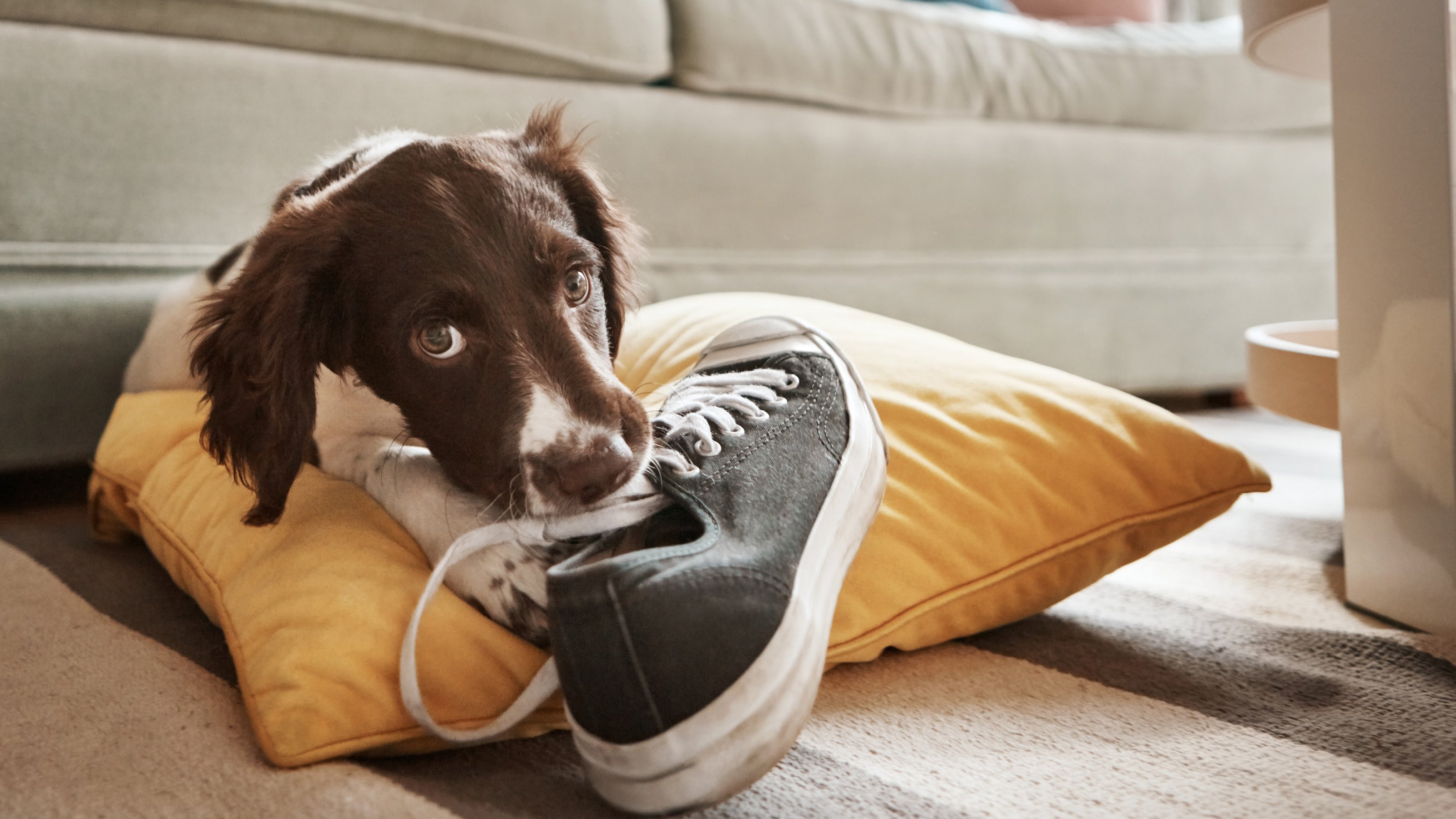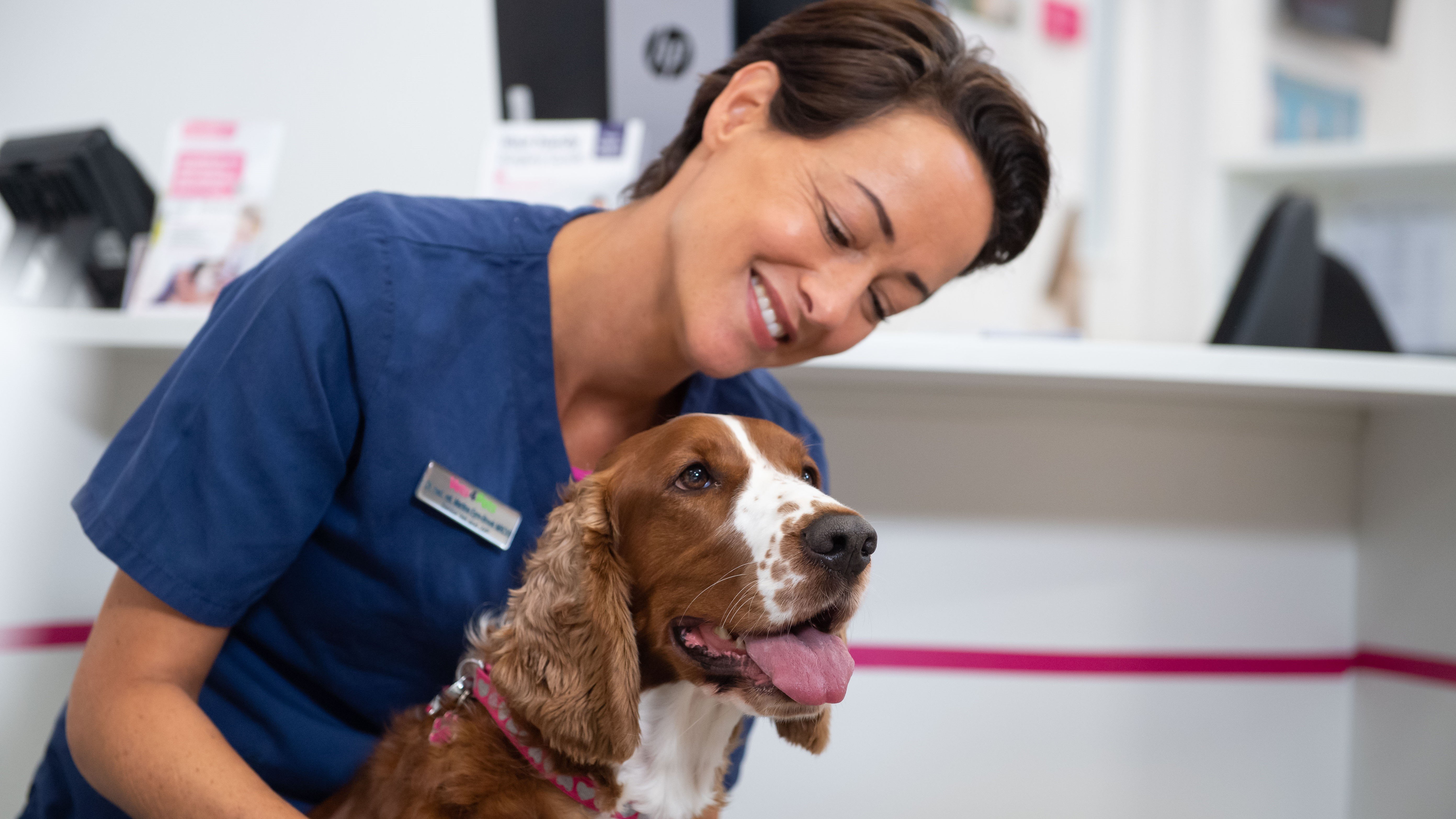
Preparing Your Dog For A Change In Routine
Have you stopped to think about how your daily routine has changed, and how that might have affected your dog?
Many pets find a change of routine stressful, because they like predictability. Dogs, in particular, are really social animals and most of them thrive on company. So, when they are suddenly back to being left alone for longer periods, some of them might find this really challenging and you may see signs of anxiety or boredom.
Top tips for helping pets to cope with a change in routine
If you’ve been keeping different hours lately, gradually move timings for getting up and going to bed, so your pets know when they’ll be let out for their last toilet break of the evening.
Stick to regular mealtimes for your pets, so they aren’t wondering when dinner is going to appear. Predictability can help to reduce stress in many pets.
As restrictions are lifted, it should be much easier to exercise dogs at convenient times and for as long as it suits you. If you start to adapt your walks now and take your dog out at the same times as you will do when you’re working, they won’t be on edge all day, thinking they could be about to go out.
You certainly don’t need to withdraw attention from your dog in preparation for being left – that could be confusing and frustrating for them – but try to initiate the interactions where possible, so that you aren’t inadvertently rewarding attention- seeking behaviour.
Inviting them to play a game with you, training and grooming them can all be fun time spent together.
Remind your dog that they have the skills to be left safely alone when you’re indoors, as well as when you leave them to go out.
- When you’re at home, spend some of the time in rooms to which your dog doesn’t have access, or pop them into their crate with safe toys or chews for a while. You can leave a radio on for them so they have background noise.
- Don’t make a big fuss when you leave or come back to your dog. They can predict when we’re about to leave them, by spotting subtle cues and signals we’re giving out. If we make a big fuss of them when we return, we make it even more rewarding. Instead, greet them calmly once you’ve got indoors and have put your keys away. If we make leaving and returning less of an event, it can help dogs to feel more relaxed.
- Practice leaving your dog at home for varied but sometimes longer periods. Make sure they have safe toys and chews to keep them occupied and a comfy place to rest. Crating dogs can work well, if they would normally choose to tuck themselves away in there when they want quiet time. Your dog’s crate should be a comfy, safe place that they associate with good things.
- If your dog is very young and has never been left before, remember that they’re more likely to need to go to the toilet more frequently than older dogs. When teaching them about being left, limit their time alone and, where possible, time it for when they’ve had a play and would normally be going for a nap.
You might not know your dog is going to struggle with separation until you have gone back to work, or you’ve tried to leave them for longer than usual. If your dog has had issues with being left in the past, you might already be expecting problems. Young dogs who have never been left alone before and sometimes, dogs who have come to you from an animal welfare organisation, might be more likely to develop separation-related behaviour once they’re left alone.
Separation-related issues aren’t always caused by anxiety at being left – some dogs get bored on their own and may entertain themselves by taking apart your soft furnishings or chewing off all your cupboard handles! For others, the behaviour does stem from anxiety and yet others may only have problems in certain contexts, e.g. during stormy weather, or around the time people are setting fireworks off.
Signs that your dog isn’t happy being left alone include...
- Changing behaviour when they spot you getting ready to go out. For instance, they may begin panting, pacing, whining or waiting by the front door, or following you around closely when they see you picking up your keys or putting on your shoes.
- You might hear your dog barking or howling when you leave the house or arrive back... or your neighbours might let you know that they can hear your dog when you’re out.
- You may come home to unexpected toileting accidents, even though your dog was fully housetrained previous to this. Sometimes, this even includes being sick.
- Your dog might start to show destructive behaviour towards their bed, or your furniture, home or belongings. They may scratch or chew at doors and windows, as though they’ve tried to escape.
- If your dog spends time in a crate when you aren’t home, you might find that they’ve pawed or chewed at the bars and hurt their paws or gums. If they are anxious, they may have drooled and got their fur or bed very wet.
It can be difficult to establish whether a dog is feeling bored or whether anxiety is the problem, without witnessing how the dog reacts when they’re left. When vets and behavioural counsellors are investigating cases of separation-related behaviour, they’ll often set up a camera to see what’s going on. Whatever the underlying reason, of course, none of us wants our pet to feel so strongly about being left that they destroy things or hurt themselves.
First, it’s worth taking a look at what life-before-lockdown was like:
- How much time did your pet spend on their own?
- How did your daily routine involve your pet, and how much time did you spend with them?
- How was your pet’s behaviour before lockdown?
- Have you developed any new routines and habits that you’d like to carry on with once restrictions are lifted?
Dogs are much more likely to develop a strong attachment to you and, of course, part of the joy of having dogs is their eagerness to join in with anything you’re doing. You might not realise just how much they’ve come to depend on you until it’s too late and you’ve come home from work to find they’ve destroyed a door frame or toileted in the house. We call problems associated with being left alone ‘separation-related behaviour’.
Prevention is always better than cure, so it’s worth putting some measures in place now to help our pets prepare for being left alone.
Think about how your new routine will look:
- When will you take your dog out for walks, and how long will you have for this?
- When will feed times be?
- When will people be around to play with, train, or care for the dog?
- What time will everybody get up in the mornings and when will they go to bed?
Now is the time to begin to create more of a daily routine for your pet that reflects how life might soon look.
Health Plans to keep your dog healthy
At Vets4Pets we offer a range of Health Plans that make essential routine treatments more affordable. You'll save money on things like annual vaccinations, flea and worm treatment and routine health check-ups.

Read more expert pet advice
From healthy diets to preventing fleas, find free and helpful pet health and training advice to care for your pet.
